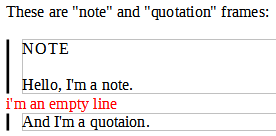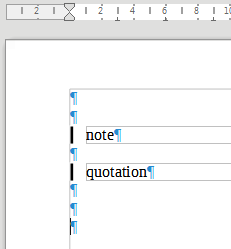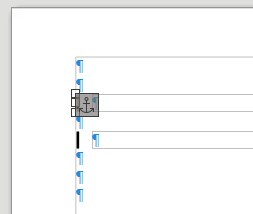When I insert a frame anchored to a paragraph and I press the Enter key on the line below it (that is, below the frame), the frame moves down.
I don’t think this is a bug, but this is inconventient for me. For example, if I insert a frame for a note and a frame for a quotation one after another separated by an empty line (yes, I use empty lines to separate paragraphs; I know this is not correct, but I still like this), and then I want to insert additional empty lines between them – so that I put the mouse cursor on that empty line and press the Enter key, – both frames moves down.
The workaround is to change the way how both frames are anchored from “To paragraph” to “As character”. This works fine, but as a purist I don’t like that this is not really how it should be. Anchoring as character should be reserved for frames that are really inline, such as inline formulas:
Blah blah blah [e=mc^2 ] (inline frame) blah blah blah
And since my frames are full-width, the correct way to anchor them is “to paragraph”, not “as character”.
So, is there a way to keep these frames anchored “to paragraph”, but fix the issue described above?




